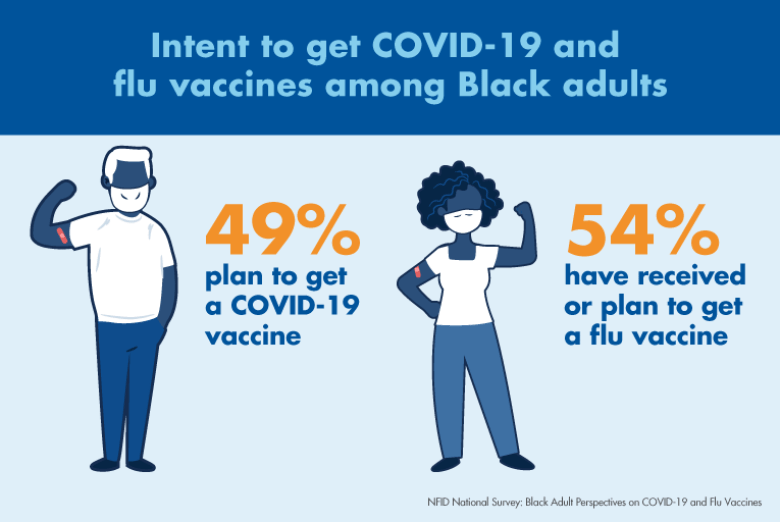Last Updated on December 12, 2022 by BVN
Breanna Reeves |
As COVID-19 cases increase and hospitals are overwhelmed with hospitalizations related to Respiratory Syncytial (sin-SISH-uhl) Virus or RSV-related illnesses, coupled with a worsening influenza season, public health officials are warning the public of a “tridemic.”
RSV was discovered in 1956 and has been recognized as a common and seasonal respiratory illness, mostly among children, according to the U.S. Centers for Disease Control and Prevention (CDC). RSV symptoms include fever, cough, runny nose, wheezing and in young infants, difficulty breathing.
In combination with the COVID-19 pandemic and an early flu season, higher than normal cases and hospitalizations of RSV have been reported by hospitals across the state.
According to the California Department of Public Health (CDPH), the number of children who need hospitalization is currently outpacing hospitals’ ability to expand the number of pediatric beds available. The department noted that hospitals typically have about 35% to 40% open pediatric intensive care unit beds, but that number is down to about 20% statewide.
“RSV and flu, and now COVID-19, are on the rise – leading to the hospitalization of our youngest and most vulnerable Californians who need all of us to help protect them,” said State Public Health Officer and CDPH Director Dr. Tomás Aragón in a statement.
On Dec. 1, Riverside County reported the county’s first child flu-related death. The child was under the age of 10 and passed away at a local hospital where he was taken with respiratory symptoms. Health officials stated the child had been ill for a few days and tested positive for both influenza and RSV.
Black Voice News and IE Voice spoke with pediatric infectious disease specialist and health journalist, who does clinical work at Harbor UCLA Medical Center in Los Angeles, Dr. ChrisAnna Mink, to discuss the atypical winter season as hospitals battle a triple threat of viruses.
This interview has been edited and condensed for clarity.

(source: centerforhealthjournalism.org).
BVN/ IE Voice:
Can you begin by giving a brief breakdown of what the Respiratory Syncytial Virus (RSV) is and what happens when the virus enters the body?
Dr. Mink:
RSV is one of the most common respiratory viruses for humans. Actually, humans are the only ones that get infected with RSV. It particularly causes problems for the very young and for the elderly. By age two, almost all kids on the planet have had some infection with RSV. For most of us, even for the little ones, it’s basically a cold, runny nose, a little cough, maybe a little fever, and in a week, you’re better.
However, for teeny tinies — those under six months, especially those younger than two months — it can be quite devastating in that it doesn’t just stay in your upper respiratory tract, it gets down into your lungs and your lower respiratory tract. So, you’ll hear people say, ‘we had a cough that just wouldn’t stop’ or ‘my baby was wheezing,’ all kinds of symptoms that just make it hard for oxygen to get down into their lungs. And that’s why it causes such significant problems for the littles.
This however, can also happen in any age group for people that have compromised immune systems or some heart or lung problems, and also for the elderly.
What happens is this virus kind of gets in from big respiratory droplets…[and] all of those little drops coming out of your respiratory tree can carry the virus. If you’re in close contact with someone, another human can give it to another human. The other way it can happen is if someone, and especially we see this with kids, if they put their respiratory droplets on the table or something and then you happen to touch it. It can live on that table or toy for a few hours and some data suggest up to 24 hours.
BVN/ IE Voice:
From what I understand, RSV has been around for a while, but recently, California is experiencing higher cases than previous years. Can you explain why that may be?
Dr. Mink:
We like to say it comes sometime between Halloween and Thanksgiving, and then it peaks up in the winter, January and February, and then tends to be gone, most of the time, by April. I don’t know where it goes the rest of the year. But this year is really different and a question I’m asked a lot by parents is ‘what’s going on?’
Over the last two years, because of COVID, we did a lot of things with really conscientious hand washing and masking. Well, that not only kept away COVID, it kept away a lot of the other usual winter respiratory viruses. So, we haven’t seen a lot of RSV, or even a lot of influenza, in 2020 and 2021.
Once everybody took their masks off and got back together, all those viruses have come back with a vengeance, and that’s what we’re seeing. One of the highest rates of RSV is about 25 [cases] per 100,000 people, and we tend to hang probably maybe a fourth of that. It’s really out of control this year.

I have a teeny bit of good news for you. From the CDC data, it looks like maybe RSV has peaked and it’s maybe coming down a little bit. However, we really don’t know what’s going to happen with the holidays and everybody getting back together.
The bad news I have for you is that influenza is at one of those highest levels since maybe like 10 years [ago], like the 2009 pandemic that we had. So influenza, including in California, is at one of the highest rates we’ve seen in a long time. More bad news: COVID is also going up.
BVN/ IE Voice:
Are you noticing any trends among children with RSV such as a specific age group who is more vulnerable?
Dr. Mink:
About one to two per cent of all children born in the US end up with hospitalization with RSV. It’s something that we’ve dealt with forever. This year, we’re seeing a lot more hospitalizations or we have seen a lot more hospitalizations. Things have quieted down a little bit last week. I hope it stays that way.
I have to say not really a big difference from usual. And that usual being the kids that I mentioned to you: [children under six months of age], the ones that are very young and the ones that have some underlying health problems. The bigger kids, in association with asthma, is one of our big concerns because — it’s really interesting — kids that have had RSV are more likely to have asthma as they get bigger.
Here we are decades later, and the viruses are just smarter than we are. They will find ways to get into our bodies, unless we have some really good defenses. Right now, RSV is still smarter than we are.
BVN/ IE Voice:
Do we have any defenses against RSV at all?
Dr. Mink:
Those mitigation steps that we all learned so well for COVID work. Wear your mask. Wash your hands. Keep your distance from people, especially if they’re ill, and if you’re the one that’s ill, stay home because we have so many viruses circulating. Some of them are really devastating like long COVID, and even influenza, can lead to death, especially if you have some underlying problem.
Actually, even for COVID, with our rates increasing, the CDC has put Los Angeles County and most of California, actually, back in medium risk and have officially recommended that mask wearing be done again in public or if you’re in a group with the holidays coming up.
For RSV, there’s a monoclonal antibody. I know we’ve heard a lot about monoclonal antibodies for COVID. There’s one that’s been around a long time that we use on infants that have really high risk for hospitalization and death and those are the teeny tiny, premature babies. Something to talk to your doctor about is what should I do to protect my baby from RSV?
Also, I’m going to really encourage everyone to get their flu and COVID vaccines because the flu is devastating. So far this year, we’ve already had 14 kid deaths due to influenza this season in the country.

There’s some RSV vaccines in the works for research. There’s a couple that look pretty promising. I think Pfizer, one of the big makers of the COVID vaccine, is going to submit an application to the U.S. Food and Drug Administration (FDA) for review of their RSV vaccine.
BVN/ IE Voice:
We talked about the way these viruses come seasonally, so can we expect for numbers to drop, not only for RSV, but also influenza and COVID?
Dr. Mink:
If it were a typical season, I could say, ‘Yeah, Breanna, by February, these things are going to start declining.’ Things are weird. COVID comes and goes. So far, we haven’t figured out any particular pattern other than that if you’re immunized, the less likely you are to get severe disease, hospitalized or death, [but it] doesn’t totally protect you from getting it.
I don’t know what’s going to happen with COVID. With influenza, the season has started really early. We’ve been dealing with it since the fall and it’s still climbing. Typically, we peak in January, February.
I guess a better way to say it is that none of them are following their usual behaviors, so I don’t know what’s going to come.
BVN/ IE Voice:
Anything else you’d like to add?
Dr. Mink:
[For] Black and White babies under 12 months, there’s equal issues. There’s so many things that happen more frequently for Black babies, and it’s not the case for those under 12 months. What happens for the older kids, there is a little higher rate for kids of African American descent. The thinking is that it’s not genetic, but that a lot of those things that put you at increased risk for asthma [like] living near highways, living [with] lower socioeconomic status, living with air pollution, crowded conditions — there seems to be an increased risk of RSV for the bigger kids.



